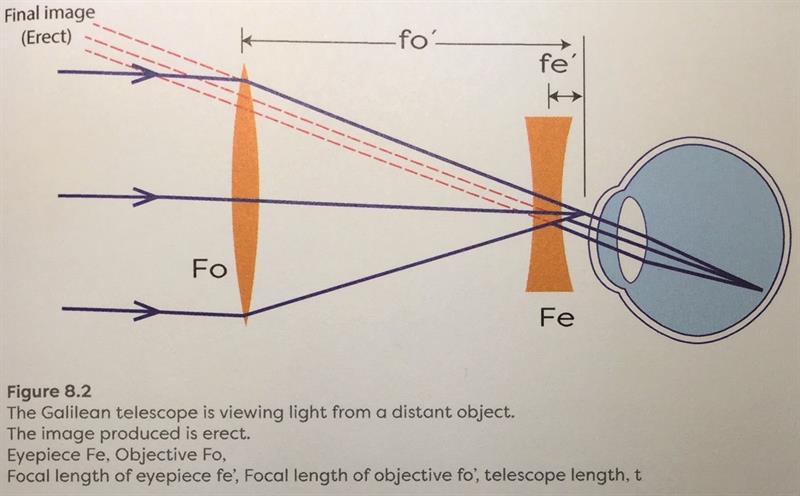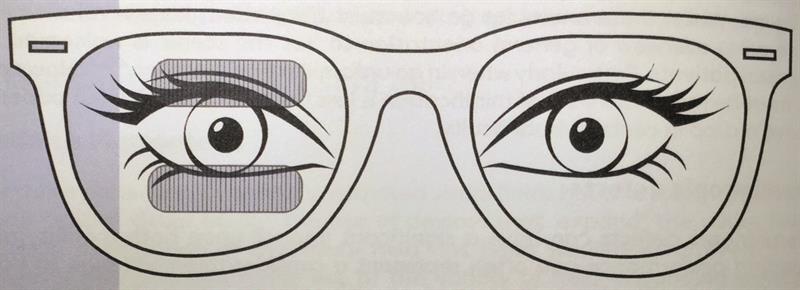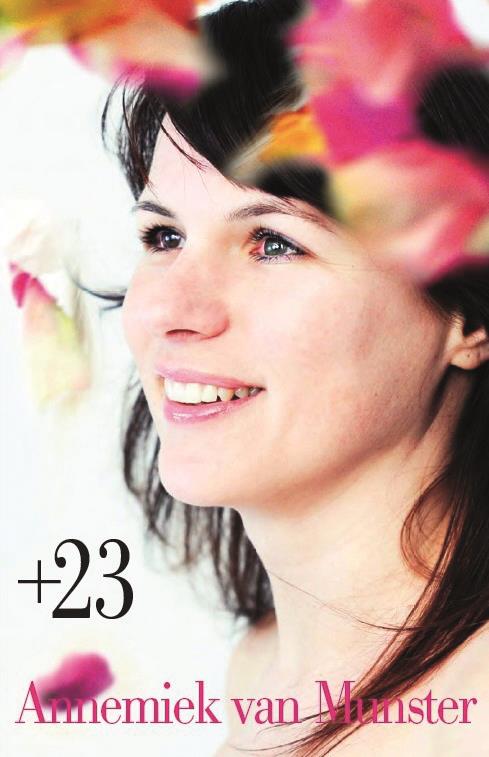The Practical Management of Visual Impairment
by Jane MacNaughton
£39.95 at Amazon
I was really pleased to see this book become available at the end of last year. I have known Jane for too many years, in fact since we were both cheeky pre-reg optoms blundering our way through the Moorfields low vision clinics, trying to remember often irrelevant formulae and hoping to provide everyone we saw with a magnifier. I suggest this is where both of us first developed a passion for this area of practice, and I know that Jane has continued to develop her skills to become the low vision specialist she is today.
I also share her belief that the practice of low vision has all too often focused on optics and optical correction, while experience continues to prove that it is much more a process of establishing a rapport and communicating with a person with reduced vision so they are best able to develop their own approach to managing their new visual environment.
If proof were needed of MacNaughton’s patient-centred approach, this well written and illustrated book begins with a quote from, of all people, the the chef Nigel Slater. ‘There is too much talk of cooking being an art or a science – we are only making ourselves something to eat.’ Well said – and this should be borne in mind when anyone interested in first developing their low vision skills approaches this book. While important mathematical models and theories are well covered, at no stage is focus lost being able to put theory into practice by clear explanation and discussion of relevance. Low vision novices have no fear.
Scope
This book offers a good overview of its subject matter and is of a level perfectly suited for everyday low vision practice. Table 1 summarises the chapter subjects.
In many ways, the format of the book is an evolution of the same author’s excellent contribution to the popular Eye Essentials series. Each chapter is clearly defined and begins with a clear listing of each component subheading. This makes it very easy to locate specific sections, and so would be useful to keep in clinic for rapid fact checking. I also like the inclusion of quotes for each chapter from known authorities in the field. This all helps enhance the readability of the book, successfully avoiding the dry stuffiness of so many low vision texts.
Core topics
Causes and impact of visual impairment, communication, measuring vision, refraction, prescribing of aids – all present and correct and written in a way that is approachable and relevant. And readers worried about a dumbing down of the science need worry no more, as the underlying principles of optical theory are well covered, but in a way that should help the reader to be better able to manage challenges in practice. Knowing the design of a telescope, for example (1), will help in dispensing and advising a patient.

Figure 1
Understanding the optics of a hand magnifier should allow the reader to change the way it is being used and so achieve more useful magnification with the same aid rather than replace one unnecessarily. And to ensure understanding, it is always good to see worked examples scattered throughout a text (2).

Figure 2
I particularly like the fact that there is a whole chapter discussing the topic of distance vision – this often-neglected topic is key to accurate assessment and MacNaughton’s discussion of various acuity charts, contrast charts, visual fields tests and computerised targets is spot on.
Developing clinical skills
Importantly, the book reflects well the many advances that have been made in helping the visually impaired. Electronic magnification has a chapter to itself and is of just the right level to both help the inexperienced while ensuring it will not become dated too soon in this rapidly evolving subject (new smartphone apps seem to appear on a daily basis). Some areas of practice considered to be more advanced, for example the use of Peli prisms for field improvement (3) are all to be found here. There is also discussion of allied professional services, such as rehabilitation and sensory team service, which is an essential part of developing a useful management plan.

Figure 3
The psychology of sight loss is touched upon, and this is important if one is to help assess the psychological state of someone and so not make the all too common mistake of actually exacerbating someone’s feelings of inadequacy when offering help, no matter how well-meant. While there is still mention of the staged approach to sensory loss that we are all familiar with, MacNaughton also usefully updates this with reference to more recent work on depression and its association with sight loss. She also hints at the significance of Charles Bonnett syndrome, something I believe is rife and yet still be properly addressed by clinicians.
I like the fact that where there is some debate around the usefulness of any particular intervention, MacNaughton wisely sticks to the published evidence base. A good example here is her description of the practice of eccentric viewing (EV) and steady eye strategy (SES) training where she rightly states: ‘Despite a large number of rehabilitation services offering EV and SES training, there is still a lack of evidence regarding effectiveness, with only moderate evidence to suggest that combined EV and SES training improves reading speed and activities of daily living in patients with central vision loss.’
Practical advice
Throughout, the emphasis is very much on practical implementation and there are useful tips throughout the book. A good example here is where the author discusses the potential problems of working distance. Too often spectacle magnification is dismissed due to expected problems of too close working distance. However, the improved field of view of a single lens in front of the eye is useful for reading and successfully locating the start of a new line in a block of text, and many people, especially those with a congenital or developmental disorder, adapt very well. ‘If possible, use a Halberg clip over the patient’s habitual prescription,’ she advises. ‘This gives the patient the opportunity to make direct comparisons and thus appreciate the difference in both the effect of magnification and the new working distance.’ She also suggests, ‘Miniature clip-on LED lights are available from several bookstores that can be attached onto the book.’ Very useful when the head is blocking out surrounding lighting.
Talking of lighting, another sadly under-represented topic, it is refreshing to see a section given over to the topic. Good and specific advice on lighting is incredibly important. Churlish as it may seem to have any criticism of this book, some more detail on exactly what sorts of things might be recommended to different patients would be helpful here (appliances, lamps), either within the text or as a referenced resource.
Recommendation
This book manages to be readable, concise and clear enough to be essential reading for anyone first stating their low vision practice career, while at the same time having enough substance and referenced resource to be a handy revision and information source for the more experienced practitioner wishing to keep up to date in this rewarding area of practice. Well recommended.
Table 1: Chapter subjects
- Definitions and epidemiology of visual impairment
- Initial discussion and considerations
- Assessment of distance visual function
- Refracting patients with a visual impairment
- Reading performance and magnification
- Hand and stand magnifiers
- Spectacle lens magnifiers
- Telescopes and binoculars
- Electronic magnification and image enhancement
- Additional strategies, non-optical aids and lighting
- Assessment of children and young people with low vision
- Impact of visual impairment and rehabilitation
+23
by Anneniek van Munster
Available at www.annemiekvanmunster.nl at €7.99

You wait for a book on sight loss that is reader-friendly and then two come at once. I was lucky enough to receive a review copy of this excellent book from Holland over the holiday period. The book can be bought directly from the author, but will soon be available on Amazon. Remarkably, this is the personal experiences of someone aged 23 at the point where they have to face up to their diminishing vision, and describes the process of adapting and overcoming the resultant challenges. At the risk of sounding a little heartless, the reason I loved this book was that it is written with great humour and warmth (you really love this person) while avoiding completely the all-too-often evangelical style that so often deters a wide readership. Indeed, the grammatical anomalies (not sure if this is the final English translation) only serve to make the narrator more real, and the text quickly becomes someone telling you their experience directly, Salinger-style.
The book begins with a letter to the reader explaining her increasing difficulty and her decision to approach ‘the regional branch of Royal Visio (an organisation that supports blind and visually impaired people) which suggested a long-term rehabilitation programme at Visio Het Loo Erf.’
We are then taken through the rehabilitation process and subsequent growth in social and emotional adaptation in a way that never fails to both educate (about the impact of sight loss on a real person) and entertain. If further proof of this is needed, check out the chapter titled ‘X-rated fun’ (page 140 if you are curious) that begins ‘We have the absolute best time at Het Loo Erf anytime when we slip into dirty jokes, leaving people open-mouthed with shock and horror. It may well have been during one of those times, that someone, somehow, came up with the rowdy idea of all going to the Erotica Fair.’ The subsequent description easily out-rivals Bryson or Theroux in both its bawdiness and innocence.
But I do not wish to trivialise this excellent read as mere entertainment. By the time you reach the end and find out the author’s future plans, you feel like you have lived through her experience and fully understand how she has reached her decision. All fully sighted eye care professionals would do well to read this and be better able to understand how vision loss impacts on real people.
